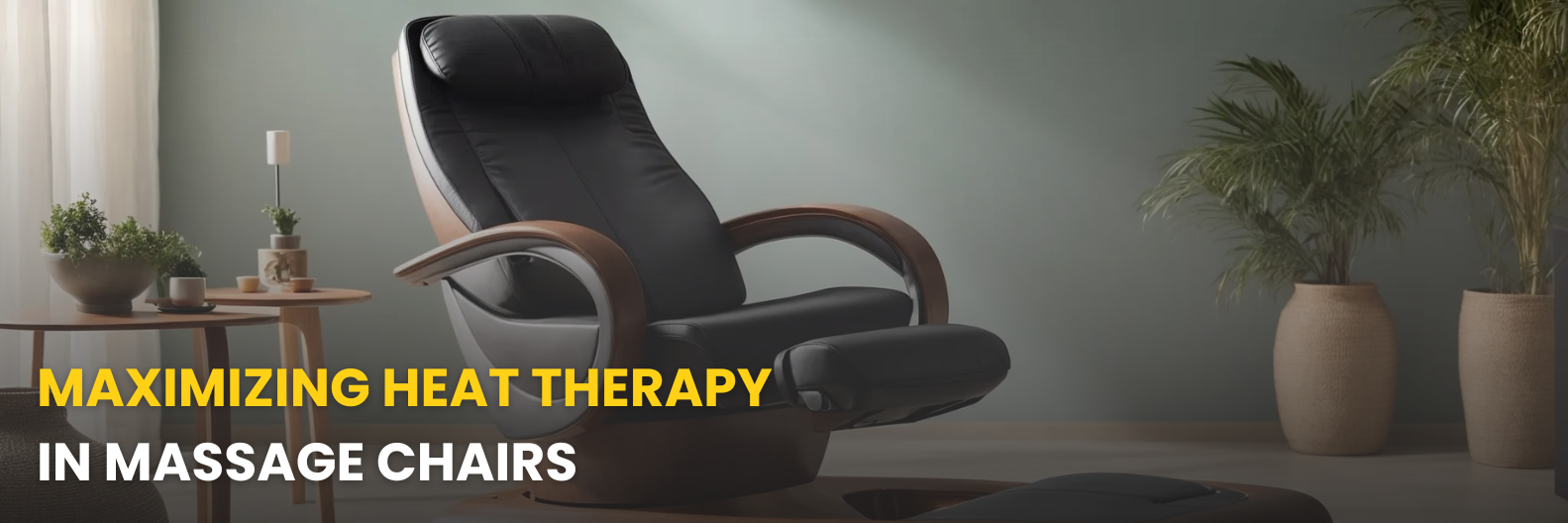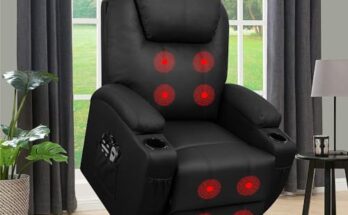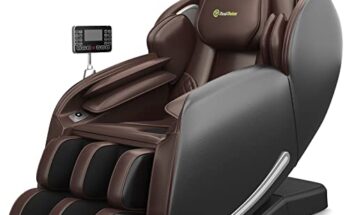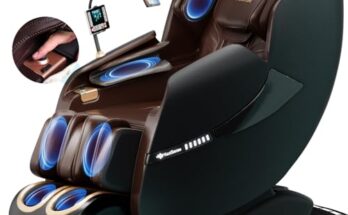Chair massage techniques involve brief, targeted bodywork to alleviate tension in the neck, back, and shoulders. These techniques are designed for quick relief and accessibility.
Engaging in chair massage provides individuals with a convenient method of relaxation, especially for those with busy schedules. Commonly seen in office environments or public events, these massages can last anywhere from 5 to 30 minutes, focusing on areas affected by prolonged sitting or standing.
Masseuses employ a variety of strategies such as kneading, compression, and tapping to swiftly soothe muscle strain. Recipients remain fully clothed, which makes the process hassle-free and suitable for various settings. Chair massages promote blood circulation, reduce stress, and can be instrumental in preventive health care. This form of massage is an effective tool for well-being, serving as a quick escape that rejuvenates the body and mind amidst the daily grind.

Credit: www.nivati.com
Unlocking The Benefits Of Chair Massage
Imagine a break that not only rests your mind but also revitalizes your body. Chair massage does just that. Unlocking the benefits of chair massage reveals a world of quick, yet impactful healing techniques. These sessions target key stress areas in the body, offering a quick escape to wellness. Let’s explore how chair massage can become your mini-vacation in the midst of a busy day.
Immediate Stress Relief
The moment hands connect with your shoulders, the magic begins. Instant stress relief is the hallmark of chair massage. A few skilled strokes, and you feel tensions melt away. These techniques are designed to release knots and ease muscle stiffness. They prompt the body to produce endorphins, our natural painkillers and mood enhancers. Explore the quick wins of this therapeutic encounter:
- Breathing slows, deepens
- Heart rate decreases
- Mind clears and refocuses
Enhanced Circulation
Boosting blood flow is critical for health. Chair massage excels here too. By kneading and compressing, a therapist helps open up blood vessels. This action ensures nutrients and oxygen reach every corner of your body. Cells become more efficient in removing waste. You feel rejuvenated. Key improvements include:
- Better oxygen delivery to tissues
- Improved removal of toxins
- Quicker recovery from muscle soreness
Convenience For Clients
Time is precious. Chair Massage understands this well. No need for appointment juggling—a session fits into the busiest schedules. You don’t even have to leave your workplace. This is wellness brought to your doorstep. Key aspects of this convenience include:
| Feature | Benefit |
|---|---|
| Quick setup | More time for relaxation |
| No change of clothes | Be ready to go in moments |
| Flexible timing | Choose your own slice of calm |
Essential Tools And Environment
Chair massage techniques are not just about the skills of the practitioner. The tools and environment play a crucial part in the overall experience of a client. The right chair, atmosphere, and strict sanitation practices make a significant difference. Let’s ensure that every element aligns perfectly for an unforgettable massage session.
Choosing The Right Chair
The chair is the foundation of any chair massage. Select a chair that is sturdy, comfortable, and adjustable. Features to consider include:
- Adjustability: Look for full height, arm, chest, and head support adjustments.
- Comfort: Opt for thick cushioning that holds up over time.
- Stability: Ensure the chair doesn’t wobble and can support various body types.
Creating A Soothing Atmosphere
A calming environment enhances relaxation. Consider these elements:
- Lighting: Soft, dimmable lighting is key.
- Music: Soothing tunes or nature sounds set a peaceful mood.
- Decor: Choose relaxing colors and minimalistic decorations.
- Aroma: Gentle scents from essential oils can relieve stress.
Sanitation And Hygiene Best Practices
Cleanliness is paramount for client safety. Always follow these practices:
- Disinfect: Wipe down the chair with antibacterial cleaner after each use.
- Linens: Use fresh, clean face cradle covers for every client.
- Hand Hygiene: Wash hands before and after treatments with soap or sanitizer.
Anatomy And Physiology Considerations
Chair massage offers targeted relief for the body’s stress points. It incorporates knowledge of body structure and function. To ensure an effective and safe chair massage, understanding anatomy and physiology is crucial. Let’s delve into how these considerations shape the techniques used.
Muscle Groups Targeted In Chair Massage
Chair massage focuses on specific muscles. With the client seated, therapists can easily access:
- Neck muscles like the trapezius and scalenes, easing tension headaches.
- Shoulder muscles, including the deltoids, for improved range of motion.
- Back muscles, especially the erector spinae and latissimus dorsi, for posture support.
- Arm muscles like the biceps and triceps, to reduce arm fatigue.
Understanding Pressure Points
Applying pressure to specific points can unlock tension. Common points in chair massage are:
- The base of the skull, called the occipital ridge.
- Between the thumb and index finger, the thenar eminence.
- The mid-shoulder area, or the supraspinatus muscle.
Avoiding Contraindications
Mindful practice prevents harm. Key contraindications include:
| Contraindication | Description |
|---|---|
| Inflammation | Skip areas with acute inflammation. |
| Skin Conditions | Avoid massage over broken skin or rashes. |
| Medical Conditions | Seek advice on conditions like osteoporosis. |
Core Chair Massage Techniques
Discover the core chair massage techniques to soothe your muscles. Chair massages are perfect for quick relief. They target key areas without the need for a full spa day. Let’s dive into the methods that make these massages deeply effective.
Compression And Petrissage
Compression is a fundamental chair massage technique. The therapist uses their hands, forearms, or elbows to apply pressure. This action increases blood flow and warms the muscles. It prepares your body for deeper work. Next, petrissage involves kneading muscles like dough. It helps in releasing knots and reducing muscle tension.
- Alternating hand movements squeeze and release the muscles.
- Rolling and lifting actions improve muscle flexibility.
- Circular movements on the shoulders and back aid in deeper tension release.
Effleurage For Gentle Relaxation
Effleurage offers a gentle approach. The therapist uses long, gliding strokes along the muscles. These strokes move from the shoulders down to the lower back. The primary goal is to relax the entire body.
- Light touch starts the relaxation process.
- Increasing pressure helps in spreading the oils or lotions.
- Repetitive strokes ensure complete muscle relaxation.
Effleurage smooths out the muscles. It makes your entire body feel calm and at peace.
Trigger Point Therapy
Trigger Point Therapy seeks to alleviate pain. The therapist finds tender muscle spots known as trigger points. These points often relate to patterns of stress in the body. Once located, focused pressure helps in releasing these knots.
- Direct pressure interrupts the pain signals from the trigger point.
- Gradual increase in pressure helps the muscle to relax.
- Patient breathing aids in the release process.
Trigger Point Therapy is often a part of a comprehensive chair massage. It provides relief and helps in long-term healing.
Sequence And Flow Of A Chair Massage Session
Welcome to the art of chair massage, where each touch is choreographed for the utmost relaxation. Understanding the sequence and flow is crucial for a seamless experience. Let’s dive into the world of chair massage techniques, outlining the steps to guarantee a soothing and effective session.
Warm-up Strategies
A proper warm-up is essential for a successful chair massage. Begin with gentle gliding strokes to introduce touch and promote blood flow. Focus on areas of tension to prepare muscles for deeper work.
- Use effleurage techniques to soothe and warm the back.
- Palm circles along the shoulders release initial stiffness.
- Progress to spreading the muscle fibers with light kneading.
Navigating A Full-back Session
The back is a canvas of stress points. Develop a strategy to navigate through it.
- Start at the lower back, applying pressure with thumbs and palms.
- Work upwards towards the shoulders in a smooth flow.
- Focus on trigger points without overstaying on one spot.
- Alternate between kneading, rolling, and percussion to invigorate the entire back.
Incorporating Arm And Neck Work
Arms and neck are pivotal in a chair massage sequence. They require special attention for complete rejuvenation.
| Technique | Benefits |
|---|---|
| Compressions on the arms | Eases muscle fatigue |
| Neck stretches and rotations | Improves mobility |
| Scalp massage | Reduces tension headaches |
Integrate arm strokes from shoulder down to the hands, ending with gentle pulls on each finger. For the neck, maintain a gentle approach, address both sides equally, and finish with light traction to elongate and relieve pressure.

Credit: www.wishrockrelaxation.com
Advanced Techniques For Specific Issues
Massage chairs offer relief for various body issues. Advanced techniques target specific problems with precision. They relax muscles and soothe discomfort. Our methods ensure effective tension release for common issues. Discover how our advanced chair massage techniques can help.
Addressing Tension Headaches
Chronic headaches can disrupt daily life. The right approach is crucial for relief. Advanced chair massage targets key areas. Scalp, neck, and shoulder muscles undergo careful kneading. This reduces tightness linked to headaches. Follow these steps:
- Gentle pressure on temples eases tightness.
- Neck stretches alleviate muscle tension.
- Shoulder rotations unlock tight spots.
Alleviating Lower Back Discomfort
Lower back pain is a common complaint. Chair massage combats this with specialized moves. Lumbar region focus is a priority. The correct actions bring significant relief.
- Apply firm pressure along the spine.
- Work on muscles at the base of the back.
- Use gliding strokes for muscle relaxation.
Consistency brings best results. Repeated sessions are recommended.
Wrist And Forearm Relief For Tech Workers
Hours at a computer cause wrist and forearm strain. Chair massage provides a solution. It incorporates wrist flexing and forearm massaging. Here’s how this technique helps:
| Action | Benefit |
|---|---|
| Circular thumb movements | Improves joint mobility |
| Pressure points along the forearm | Releases muscle tension |
| Finger pulls and twists | Enhances blood circulation |
Building A Repertoire Of Skills
Building a repertoire of skills as a chair massage therapist is like crafting a unique toolkit. Each skill you add enhances your ability to work wonders with just your hands. It’s not only about mastering the basics but also about adding layers of expertise. This continuous growth ensures your techniques remain fresh and impactful for every client who sits in your chair.
Continuing Education And Certifications
Boosting your qualifications through ongoing education and certifications is essential. It keeps your skills sharp and clients confident in your abilities. Consider these steps:
- Enroll in advanced courses that focus on chair massage techniques.
- Earn certifications in specialized modalities to widen your scope of practice.
- Attend workshops and conferences to learn from experts in the field.
Integrating Feedback And Personalizing Approaches
Client feedback is a goldmine for improving your massage techniques. Here’s how to use it to your advantage:
- Listen actively to what clients prefer during their sessions.
- Adjust your techniques to tailor the experience for each individual.
- Keep a log of personalized adjustments for consistent care.
Staying Informed On Industry Trends
Keeping up with industry trends is crucial to staying relevant. Keep these points in check:
| Trend | Benefit |
|---|---|
| New massage tools | Enhances technique efficiency |
| Emerging wellness practices | Expands service offerings |
| Evolving client preferences | Maintains client satisfaction |

Credit: www.amazon.com
Frequently Asked Questions For Chair Massage Techniques
What Techniques Are Used In Chair Massage?
Chair massage techniques include compression, kneading, tapping, and friction to target back, shoulders, neck, and arms while seated in a specially designed chair.
Which Techniques Is Most Commonly Used During Seated Massage?
The most commonly used technique during seated massage is acupressure, which targets specific pressure points to relieve tension.
How Do You Massage Someone In A Chair?
Begin by asking the person to sit comfortably in the chair. Use firm but gentle pressure to knead their shoulders, neck, and back. Focus on tense areas, applying circular motions for relaxation. Always communicate to ensure comfort and adjust technique as needed.
Finish with smooth, soothing strokes.
What Are The 5 Basic Techniques Of Massage?
The five basic massage techniques include effleurage (light strokes), petrissage (kneading), tapotement (rhythmic tapping), friction (deep pressure), and vibration (rapid shaking).
Conclusion
Embracing chair massage methods can transform your daily well-being. They relieve stress and boost productivity. Remember, regular practice enhances the benefits. Share this knowledge; it’s a step towards holistic health. Try these techniques and feel the difference in your daily routine.



